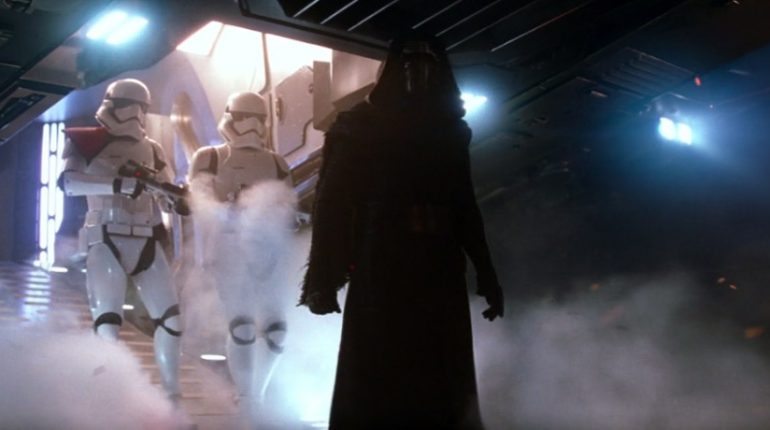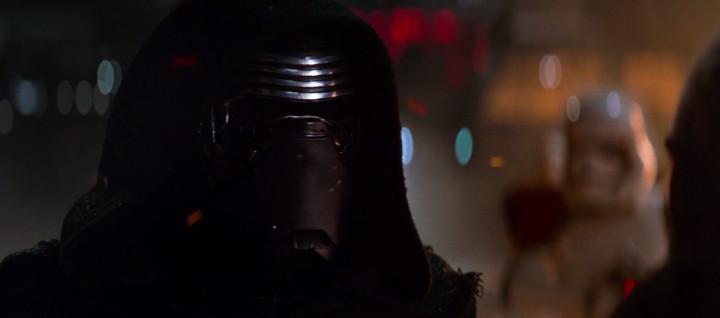
Kylo Ren has a cool mask.
This is really all we knew about the character in the months leading up to the release of Star Wars: The Force Awakens, yet it’s all we needed. It was a move designed to invoke nostalgia, to remind us of the first time we saw Darth Vader in A New Hope. What we were expecting was a really badass Star Wars villain — perhaps the next true classic.
But this was a misdirect; what we got was something else entirely.
Almost an hour and a half into the movie, Kylo Ren finally removes his mask, and we’re shown a guy who looks more like he’d cosplay as a Sith lord than someone who actually is one.
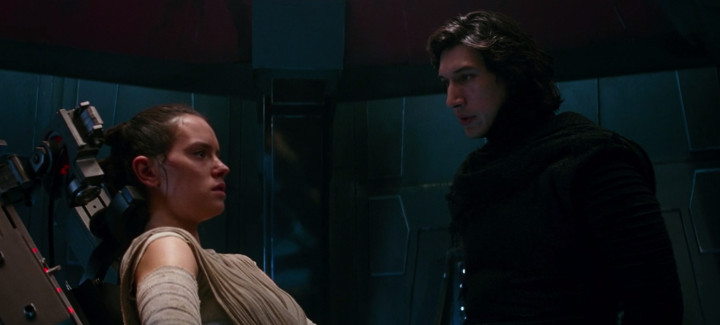
I’ve spoken with quite a few people who were disappointed by this — they expected perhaps a less-90s version of Darth Maul, not some nerdy-looking dude with daddy issues. But I always want to tell these people that this was exactly the point. One of the key elements to Kylo’s character is that he’s not as cool as any of the Sith that preceded him. It’s a brilliant choice that allows the film to subvert our expectations, even when so much else about the movie feels so familiar.
Instead of attempting to create yet another badass Star Wars villain — and come on, we’ve got plenty of those — The Force Awakens asks the bold question: What would someone look like who actually wanted to be Darth Vader in a universe where actually being Darth Vader was a vague possibility? Well, it probably wouldn’t look a thing like, say, Darth Maul.

Instead, we’re shown a character who’s filled with self-loathing and self-doubt. His father is Han Solo, his mother is Princess Leia, his uncle is Luke Skywalker, and his grandfather is motherfucking Darth Vader. Now just imagine what it would be like to come from that lineage, to be burdened by two generations of galaxy-altering heroes and villains, to have the impossible weight of greatness forever hoisted upon your shoulders. There’s no doubt that Kylo Ren would grow up to feel inadequate. From the moment of his birth, the expectations thrust upon him are impossible to meet.
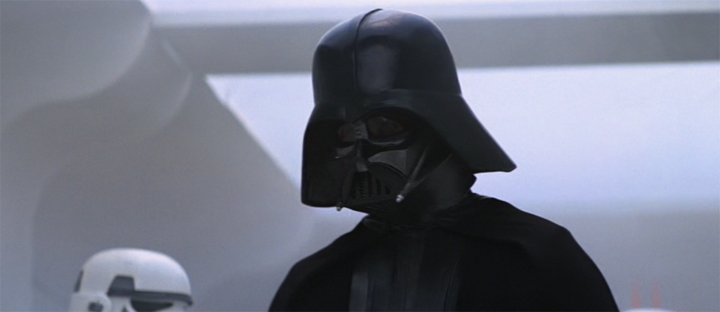
And being saddled with impossible expectations is a life situation that doesn’t usually create Darth Mauls, or people completely in control of their emotions with a knack for theatrical flips and spins; it tends to instead create Kylo Rens, or people who are perpetually compelled to overcompensate for what they perceive to be their own inadequacy.
If you want to test this theory for yourself, spend a couple hours on reddit or in the comments section of any major website. You’ll encounter armies of Kylo Rens, but you’re unlikely to find a single Darth Maul.
And why is this? Well, Kylo Ren is a very human character, while previous Star Wars baddies tend to lack humanity. Darth Vader deliberately so (remember Obi Wan’s line that Vader is “more machine now than man.”) Darth Maul never needed a personality; he just had to look cool and do flips and spins while wielding a double-bladed lightsaber (wait, you can do that?) Grievous, like Vader, was also more machine than man. And Dooku felt like a holdover from some long-lost age of chivalry. None of these characters felt like someone you would actually meet in real life, though Dooku feels a little bit like a character someone at a Renaissance Festival might try to portray (with a bellyful of mead and a phony accent).

To some extent, that was the point. And that was fine for the 20th Century and even into the early aughts. But it’s time to embrace the 21st Century and see what new things it brings to the table, to re-examine the old storytelling patterns and ask ourselves if we can try something fresh — or give an old paradigm a twist so we can look at it from an angle we might not have considered before. The Force Awakens did exactly that; it decided it was time to do something new, something risky.
And everything about Kylo Ren’s character reinforces this. His temper tantrums show us that he hasn’t learned to manage his emotions. His goofy-looking face undermines any respect he’d managed to gain while his mask was on. His praying to the burned mask of Vader shows us how conflicted he is internally.
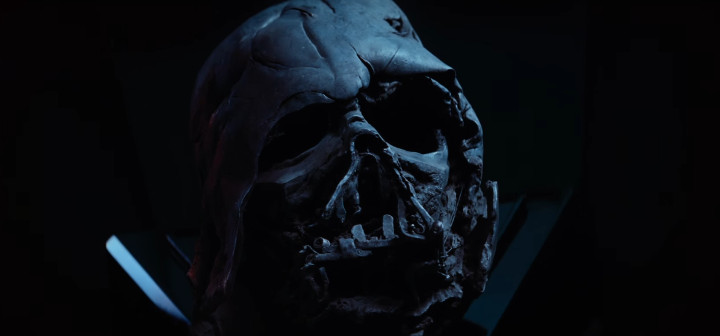
In fact, let’s look at this scene a little closer, because I think it perfectly represents what the masterminds behind The Force Awakens were intending to do with Kylo Ren’s character.
I’ve said this before, but Darth Vader’s helmet is part of a complex machine that’s keeping Anakin alive. Symbolically, the helmet represents Anakin’s embrace of the Dark Side and suggests it has fully consumed him to the point he would die without it. At the end of Return of the Jedi, Anakin’s dying request is that the helmet be removed. If we accept the helmet as a symbol for the Dark Side, its removal suggests redemption.
So symbolically, Vader’s helmet-less death shows the audience that he’s ultimately forsaken the Dark Side and embraced the Light at the moment when he’s least able to reverse the decision.
In keeping the mask as a relic, Kylo Ren embraces the darkness that Anakin had previously thrown off. In praying to it, Kylo Ren shows either an ignorance or a refusal to acknowledge the mask as no longer representative of his grandfather. We’re shown a character who misunderstands the importance of his grandfather’s dying act, and that misunderstanding is a driving force throughout the film. To be as great as Darth Vader, in Kylo Ren’s eyes, is not about redemption; it’s about embracing the power of the Dark Side.
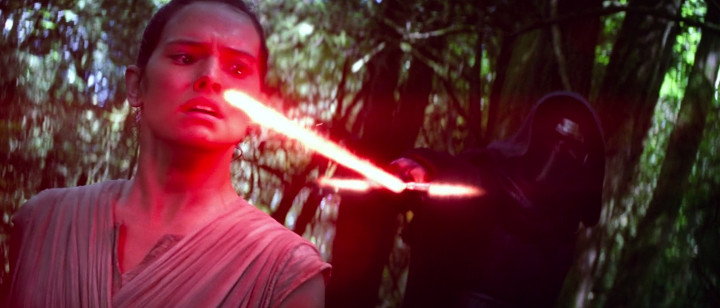
To explore this theme further, Kylo Ren doesn’t need his own mask at all (he removes it for Rey simply because she asks him to). While he might understand the mask as a symbol of the Dark Side, he doesn’t understand that it wasn’t just some cool accessory for Vader — it was life support. This is a bit like a teenager lugging around an oxygen tank because he thought his grandfather’s looked cool.
All of this diminishes the power of Kylo Ren. While at first glance this appears to lower the stakes, there’s a flipside to that coin. Kylo Ren must perpetually overcompensate for his failure to embody the Dark Side, so he tries a thousand times harder. When an opportunity arises to do something truly cruel, he must either leap at it or surrender to his own weakness. And on a psychological level, this can be more deeply terrifying than the more obvious evil that other Star Wars villains can mindlessly revel in. Vader doesn’t need to kill in order to shake off an ever-present sense of self-doubt; Kylo Ren does.

For reference, just compare Kylo Ren’s catwalk scene in The Force Awakens with Darth Vader’s catwalk scene from The Empire Strikes Back. When Luke Skywalker faces Darth Vader, he survives — and not because he managed to overpower Vader, but because Vader didn’t need to kill him to make a point. (And I suppose it could be partly attributed to Luke’s reckless willingness to drop down a bottomless pit.) But when Han Solo confronts Kylo Ren in a very similar scenario, Kylo Ren must kill him. It’s the only way for him to persist in his grand self-delusion without having the rug pulled from under him. (It’s also interesting to note that when Han Solo confronts Kylo Ren, Han asks him to remove his helmet.)
All of that hesitation he shows in the moments leading up to this, the inner turmoil he tells his father of, is real. It’s not an act designed to lure Han into his trap. He doesn’t want to kill Han; he needs to.
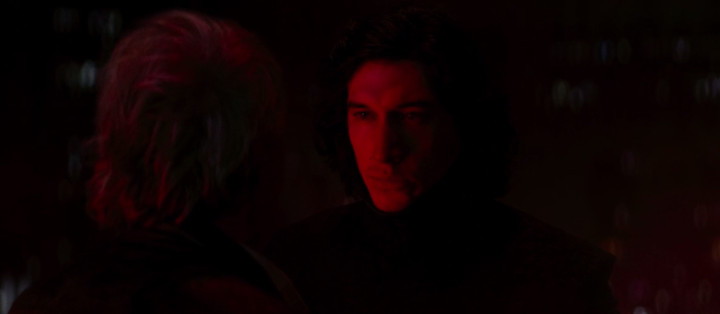
The core of Kylo Ren’s character, then, is that he draws strength from his own weakness, that his fight-or-flight response kicks on when he’s backed into a corner. At this point in the story, he’s not a villain who will gracefully accept defeat. He’ll fight with everything he has in order to prove he’s not weak, which is really just a manifestation of that very weakness.
And to further emphasize this weakness, Kylo Ren’s lightsaber beam is a sloppy, static mess, which is perhaps most noticeable when it’s compared against the straight, crisp line of Rey’s lightsaber beam (a lightsaber that also belonged to Anakin and Luke).
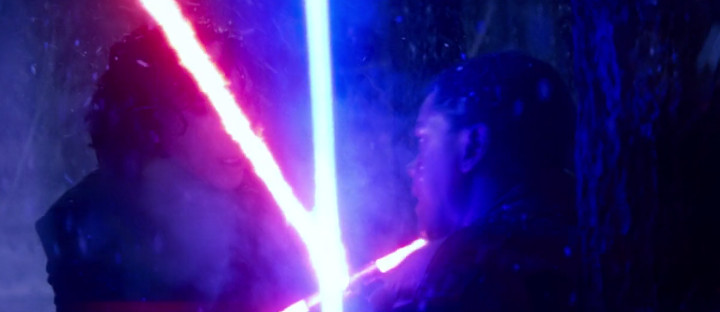
I tend to disregard the Expanded Universe as non-canon, but it was established at some point that a Jedi must construct his or her own lightsaber. This means that Kylo Ren’s sloppy blade reflects on his skill at building a proper lightsaber. (The Force Awakens Visual Dictionary claims that his lightsaber has a cracked Kyber crystal, and I would point out that it’s even possible that the crossguard vents are necessary to prevent the whole thing from overheating — a design quirk absent from every other lightsaber we’ve seen in the Star Wars films.) This is evidence of yet another aspect of the Jedi order that Kylo Ren has struggled intensely with.
Kylo Ren is a type villain we haven’t seen in a Star Wars film before, one with far more nuance and perhaps far less merchandise potential. I mean, we all wanted Kylo Ren merchandise when we first saw his cool mask, but the coolness of that mask was drastically reduced when we were shown exactly what that mask was hiding. And then Ben kills Han Solo, one of the most beloved characters in the Star Wars franchise. Fans are more likely to come away hating Kylo Ren than they are to rush out and by his action figure. (Though, let’s be honest; I’m sure his action figures did fine.)
The decision to burden Kylo Ren with the struggles of being human, then, was actually a pretty bold move. It had the potential to alienate its audience in ways Star Wars never really has before. And many people actually did feel alienated by it.
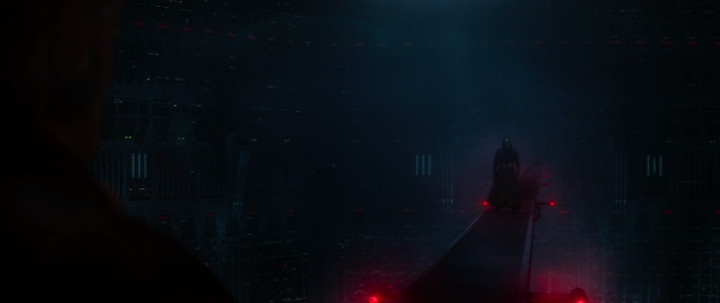
Kylo Ren isn’t as “cool” as other Star Wars villains, but that was never the point. He’s the product of applying real, believable human qualities to a person who shares the Skywalker lineage.
This choice was risky and brilliant, and it proves that, while The Force Awakens feels familiar in a lot of ways, it’s also willing to challenge our expectations. And, like it or not, challenging those expectations is exactly what Star Wars needs to do in order to continue being relevant as we plunge deeper into the ever-perplexing weirdness that is the 21st Century.
